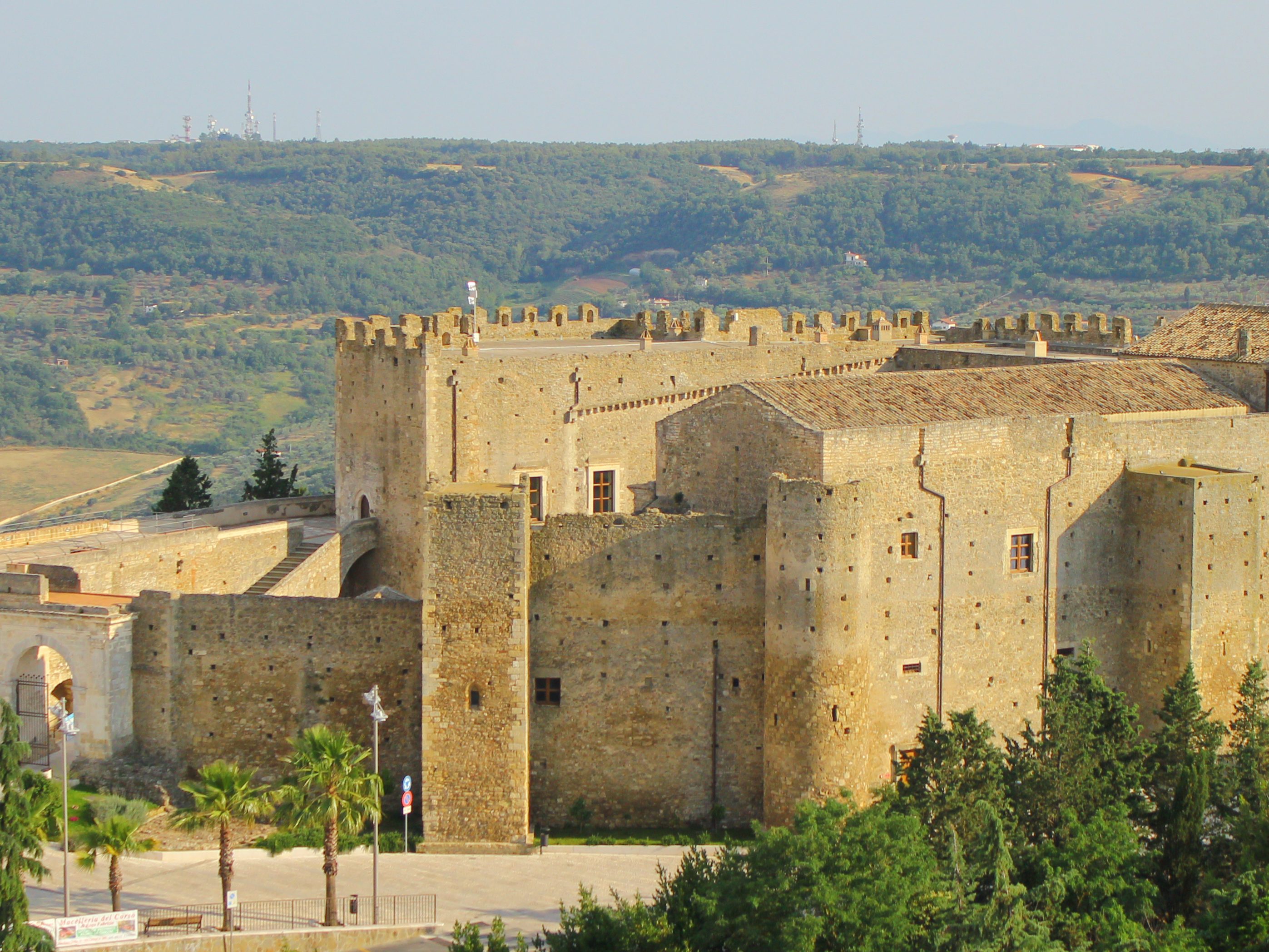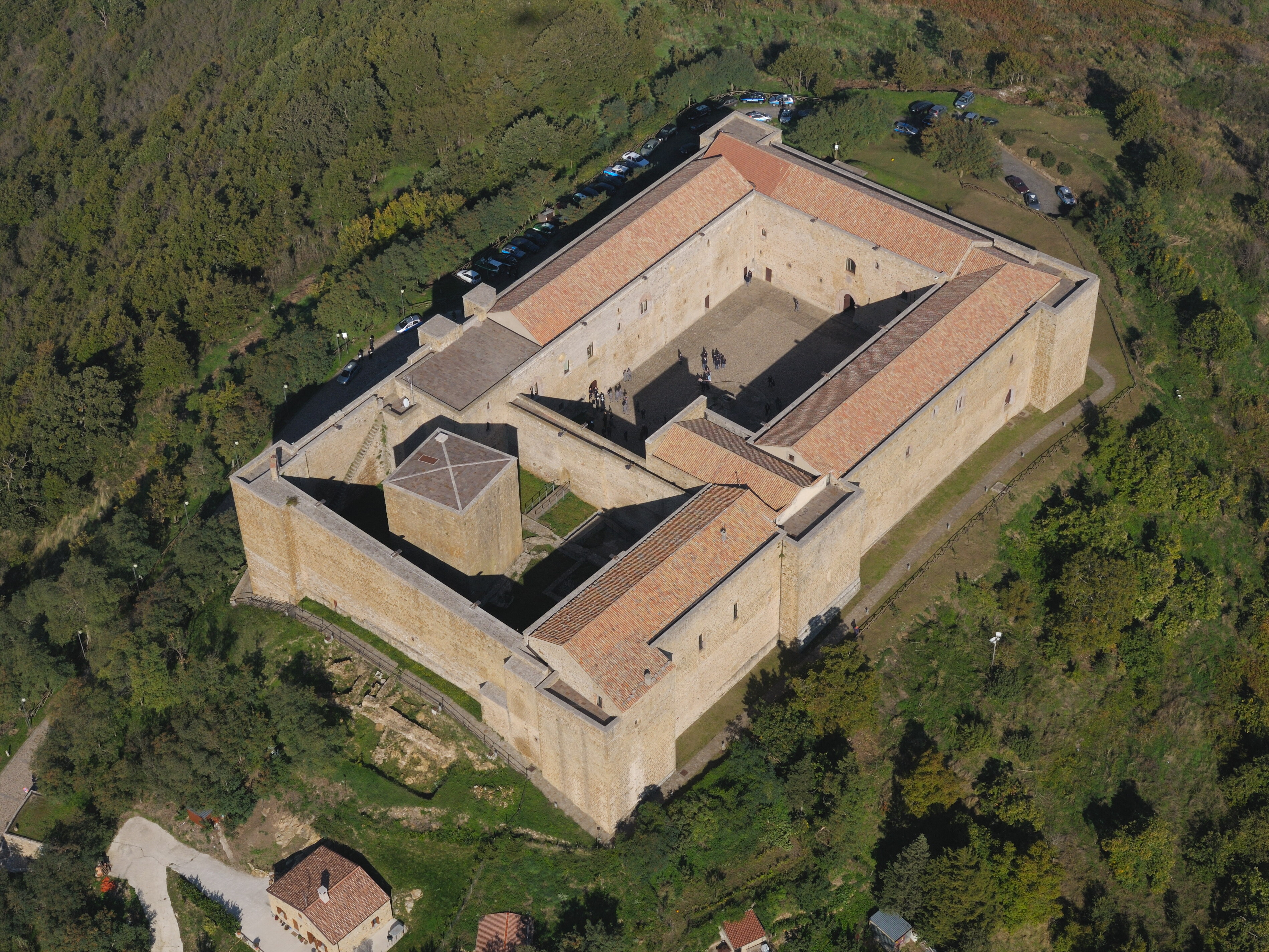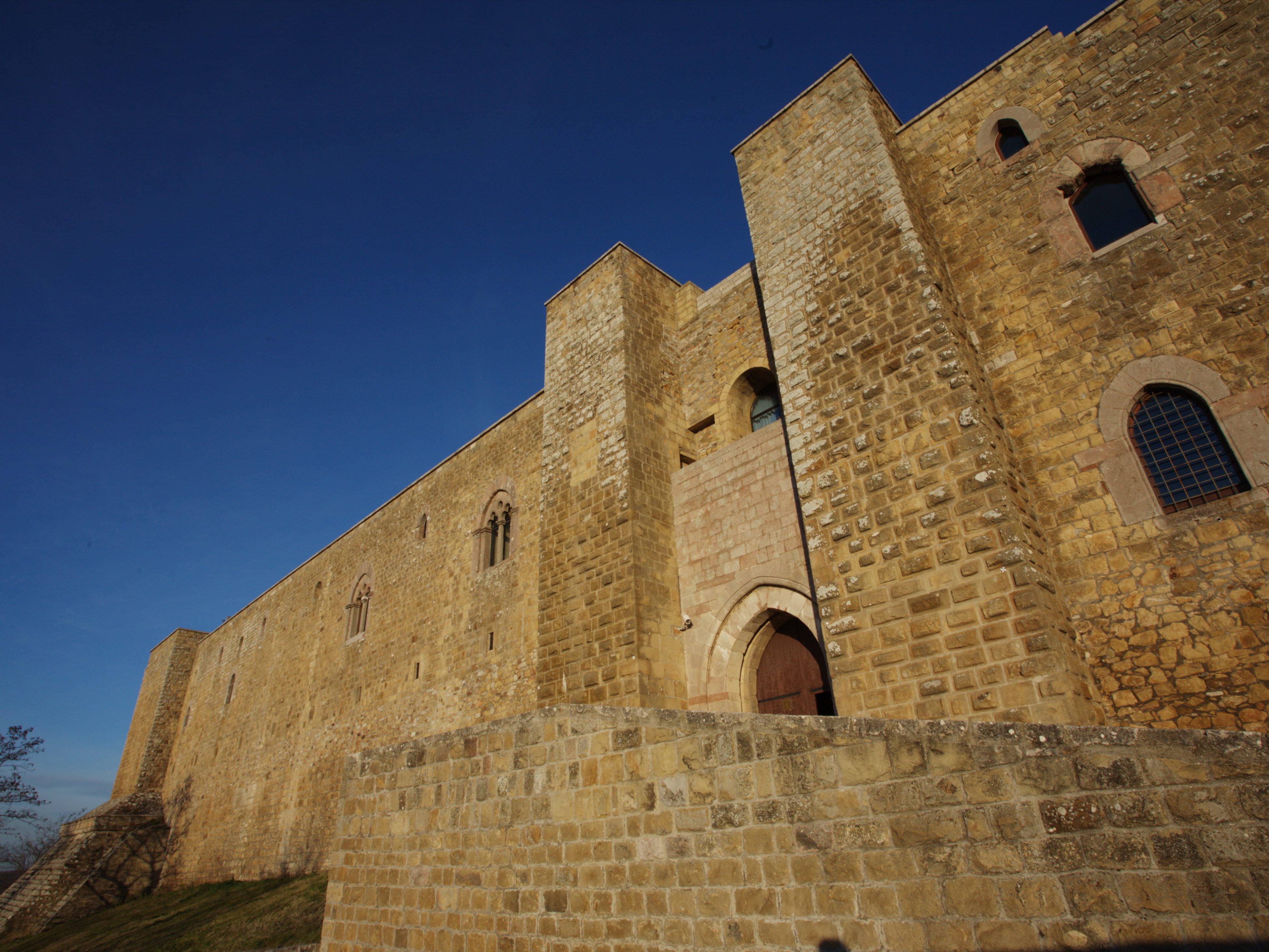Malconsiglio castle in Miglionico
Patrimonio culturale
Situated on a hilltop, the town of Miglionico develops around the imposing Malconsiglio Castle (8th-9th century AD) flanked by six towers, which dominates the entire Bradano valley. The name of the castle is linked to the bloody story of the conspiracy of the Barons of the Kingdom of Naples against King Ferdinand I of Aragon (1485). The voices of the protagonists of that momentous historical event – the Sanseverino, Guevara, Del Balzo, Caracciolo and Acquaviva, King Ferdinand I of Aragon himself and his son Alfonso – still echo in the “Sala del Malconsiglio” hall. Thanks to the multimedia path “Discovering the Conspiracy of the Barons” visitors are guided through the story of the intricate event that took place inside the manor.
Sacred performances during Holy Week
Patrimonio culturale
The drama of the Passion of Christ is performed in the streets and piazzas of Vulture-Melfese where Holy Week is marked by a succession of Sacred Performances. The processions organised in the Lucanian district faithfully reproduce the texts of the holy scriptures and are set in natural surroundings and in some of the characteristic landmarks of the Vulture towns.
Nothing found.
More Sacred performances
Nothing found.
Museo delle Antiche Genti di Lucania and the sites of Serra and Rossano
Patrimonio culturale
By enhancing local resources, following a more innovative concept of local museum, the Museum of the Ancient People of Lucania in Vaglio Basilicata exhibits evocative virtual reconstructions of the main archaeological sites scattered around the area.
According to the concept of ‘museo diffuso’, and extended, open-air museum, the archaeological sites of Serra and Rossano have been added to the tour. Rossano’s site boasts a sacred area with an extraurban sanctuary dedicated to the goddess Mefitis (a highly venerated goddess of waters), founded in the second half of the 4th century BC and inhabited until the early Roman age. On Mount Serra San Bernardo, in Serra di Vaglio, the remains of an ancient settlement, whose origins date back to the 8th century BC, have been found. Several archaeological finds and terracotta pots, of ancient Greece style and dating from the 6th to the 4th centuries BC, have also been discovered.
“Pepem Fabuleum” in Satriano di Lucania | Basilicata
Patrimonio culturale
“Pepe Fabuleam” is a permanent installation dedicated to the world of chili peppers, located in the historic center of Satriano di Lucania, one of Italy’s Authentic Villages. Besides being known for its chili peppers, the town is also famous for its murals. This “extraordinary, unique, and thrilling journey into the world of Chili Peppers” was passionately created by the Lucanian Chili Pepper Academy, the Municipality of Satriano di Lucania, and the Gal Csr Marmo Melandro. Pepem is a unique location designed to welcome and captivate anyone inspired and intrigued by the spice of chili peppers and its endless universe.
The installation is set in the ancient village of Satriano di Lucania, the only municipality in the region that hosts an Academic Delegation dedicated to chili peppers. It encompasses various aspects of the world’s most widespread and used spice. This new multimedia location is rich in technology, creating an immersive and evocative space where visitors, guided by a “strange traveler,” can explore the world of chili peppers. It’s a journey through art, cinema, music, curiosities, and various symbolisms.
Pepem spans two levels and offers two different environments, masterfully designed and created by Bitmovies. The space features an artistic exhibition of photographs by Donato Fusco, as well as installations of Satrianese artistic craftsmanship, a display of local chili peppers, and a study area for further research and exploration. The second environment is more technology-oriented, offering a multimedia immersion with life-sized projections, illustrative panels, and special effects.
The Norman Castle of Melfi
Patrimonio culturale
This impressive Norman castle is the symbol of Melfi; its story is linked to that of important residents and leading figures who have inhabited, over the centuries, this charming village cradled at the foot of Mount Vulture.
Commissioned by Robert Guiscard, then enlarged by Frederick II, provided with new towers by Charles I and renovated by the members of the House of Caracciolo and the Doria family, today the Castle seems to be literally emerging from the hilltop. Visit the Castle of Melfi, here you will discover why it is considered as the most famous castle in Basilicata and one of the largest in the South of Italy.
Its impressive ten towers – seven with rectangular design and three with pentagonal design – will immediately catch the visitor’s eye. The castle has four entrances: three of them date back to the Angevins’ period and one, built by the Doria family, is linked to the village through a bridge that once was a drawbridge. Through the door you enter into the beautiful main courtyard, overlooked by the baronial palace and the family chapel.
On the ground floor of the castle you can visit the Archaeological Museum of Melfi, which houses an important collection of archaeological documents found in the area, while the clock tower keeps a splendid Roman sarcophagus, found in 1856 and known as the “Sarcophagus of Rapolla” because it was once kept in the square of Rapolla, a small village located in the Vulture area.
Once certainly owned by an important member of the highest class, it is an elegant artefact of Asian origin dating back to the second half of the 2nd century. The Sarcophagus’s lid depicts the deceased lying down.
www.federicoitineraridellostupore.it
Lagopesole Castle
Patrimonio culturale
This castle was usually used by the great Roman Emperor Frederick II as a stopover for haunting, one of his main passions; it is also famous for being the chosen headquarters of Manfredi, son of the Emperor, who was called Stupor Mundi (the “astonishment of the world”) by his contemporaries.
Perched on a small hill emerging from the Ofanto and Bradano rivers and overlooking Lagopesole village, this charming medieval castle has a rectangular design with two floors, and it is divided in two courtyards and one tower characterised, in the upper part, by a wall made of bossage, a typical feature of the Norman architecture.
The main courtyard is part of the enlargement work commissioned by Frederick II (1242) on the remains of previous Norman and Angevin buildings, and it includes also a wide tank and a big chapel. The chapel, built in the Romanesque style, distinguishes this splendid manor house from the other buildings attributed to Frederick II, being the only example of a place of worship as compared to the other castles dating back to the imperial period.
Even after the renovation works performed in the nineties, today the Lagopesole Castle still preserves the changes commissioned by Charles I, known also as Charles of Anjou. Used as a shelter by the Italian brigands led by Carmine Crocco in the nineteenth century, today the castle is an ideal location to host prestigious cultural events. A must-see attraction is the castle’s museum, where you can take a journey into the life of the Roman Emperor thanks to the multimedia “World of Frederick II” visitor experience and a multimedia show.
www.federicoitineraridellostupore.it
The Castle of Venosa
Patrimonio culturale
Built between 1460 and 1470 upon the ruins of a Romanesque cathedral, today this impressive castle dominates the historical centre of Venosa, birthplace of one of the greatest Roman poets – Horace. Today part of the castle houses the National Archaeological Museum.
The new fortress commissioned by the Duke of Pirro del Balzo was part of a urbanisation project to be developed around the village.
The castle has four cylindrical towers, located at each corner of the quadrangular plant, a deep moat and a large courtyard surrounded by a loggiato built in the Renaissance style.
From the loggiato you can enter the municipal library and two great halls, with vaults depicting allegorical symbols of the 18th century, while the entrance hall leads to the walkway.
Part of the gallery houses the National Archaeological Museum, which keeps several documents on the the town and its surroundings, dating back to the Roman period, Late Antiquity and the Early Middle Ages.
Aliano, the Literary Park dedicated to “Carlo Levi”
Patrimonio culturale
Each corner of Aliano narrates the story of the Italian writer Carlo Levi, who spent his exile in the village between 1935 and 1936, after being arrested as a result of his involvement with anti-fascist movements.
Visitors who want to discover and remember the key places linked to the writer can make a fascinating journey through the beautiful village of Aliano, from the house where he was exiled to the Pinacoteca, then heading to the Museum of the Peasant Culture and the Presepe artwork created by the renowned artist Francesco Artese.
Inspired by the famous book “Christ stopped at Eboli”, written by Carlo Levi to recount the dramatic story of his life while banished to the villages of Grassano and Aliano, in Basilicata, the Literary Park, located in the old town and surrounded by the lunar landscape of Calanchi, the clay gullies typical of this part of Basilicata, offers visitors a sentimental journey through the places linked with the exile in Basilicata of this important writer and painter.

































